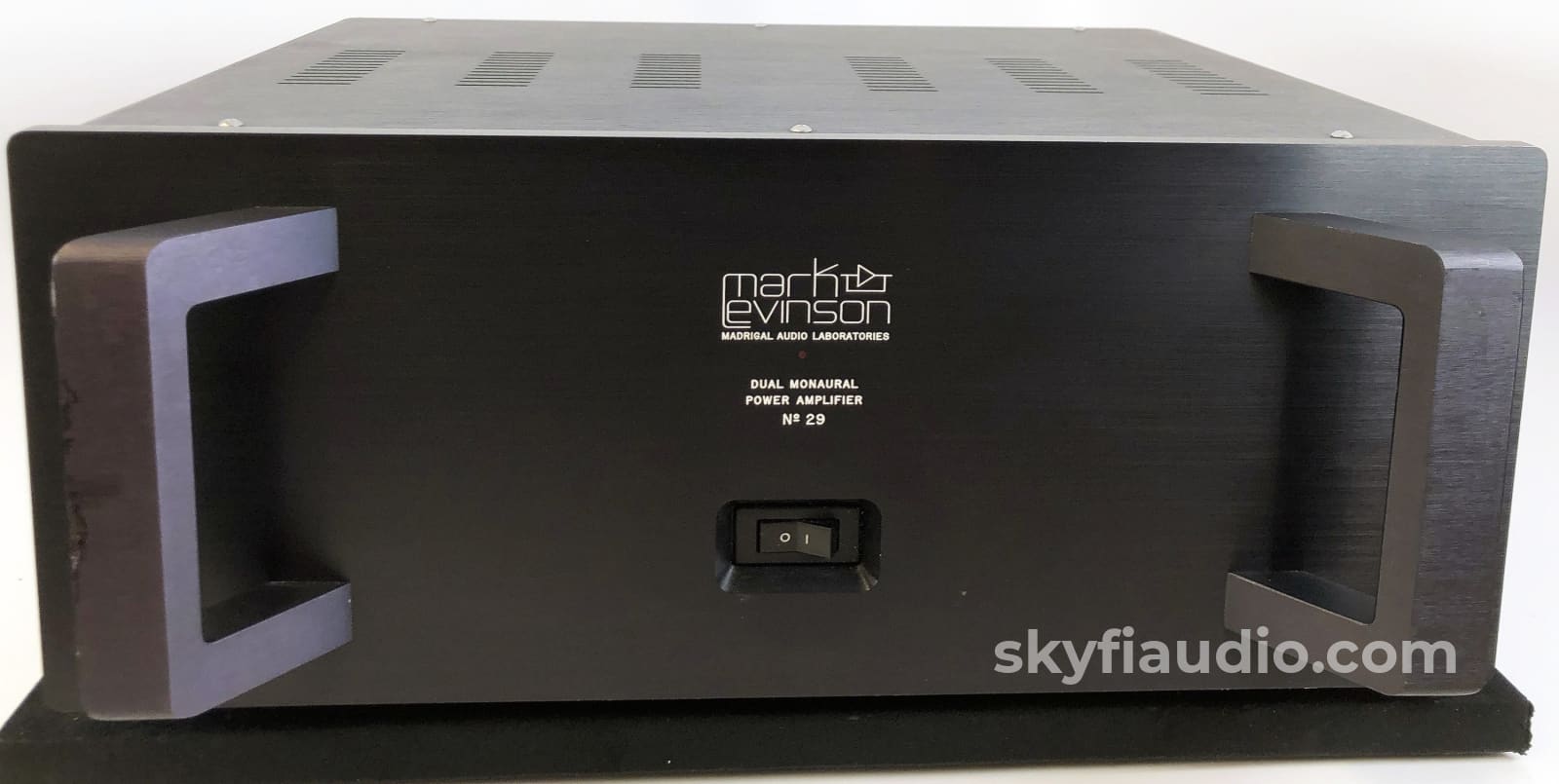
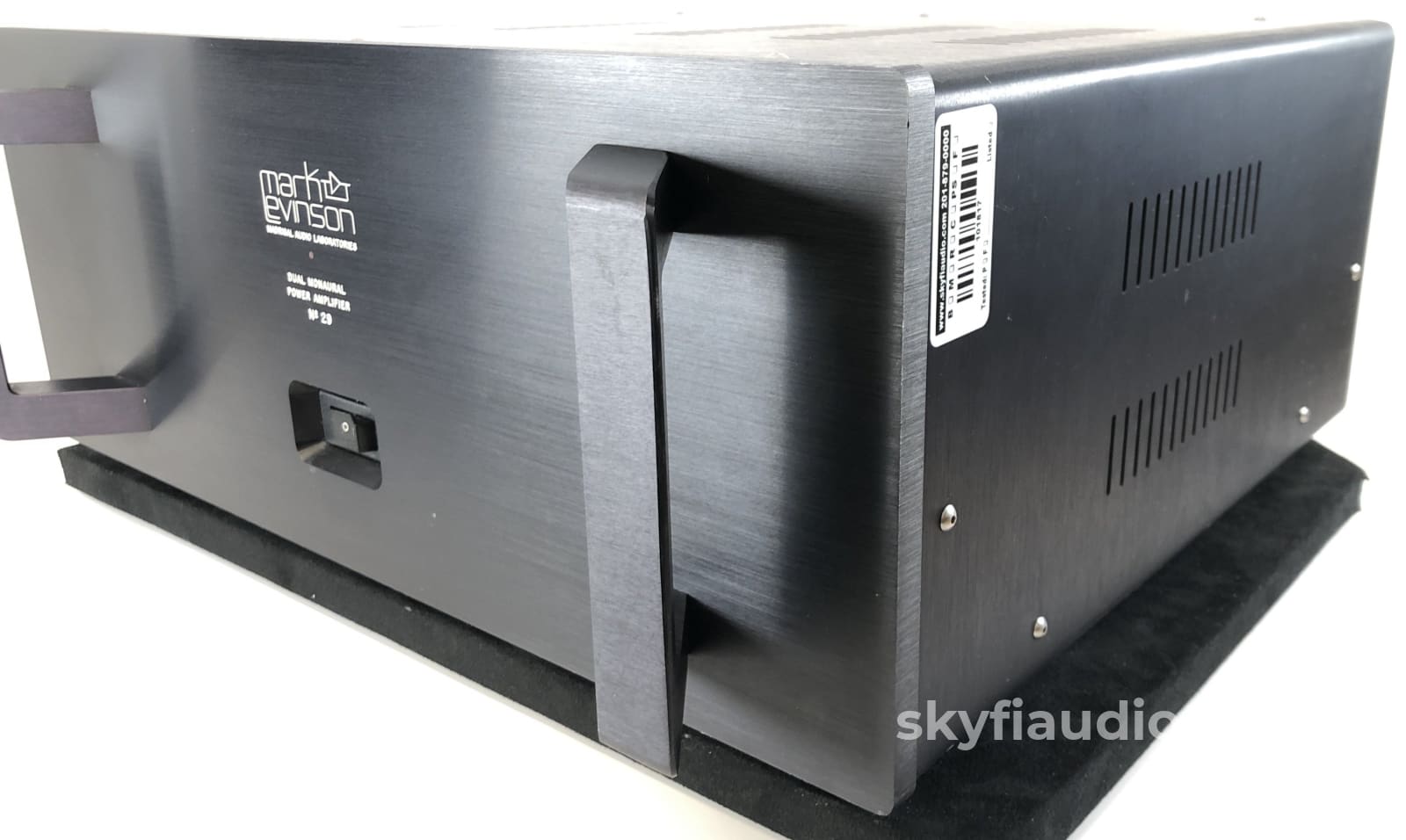
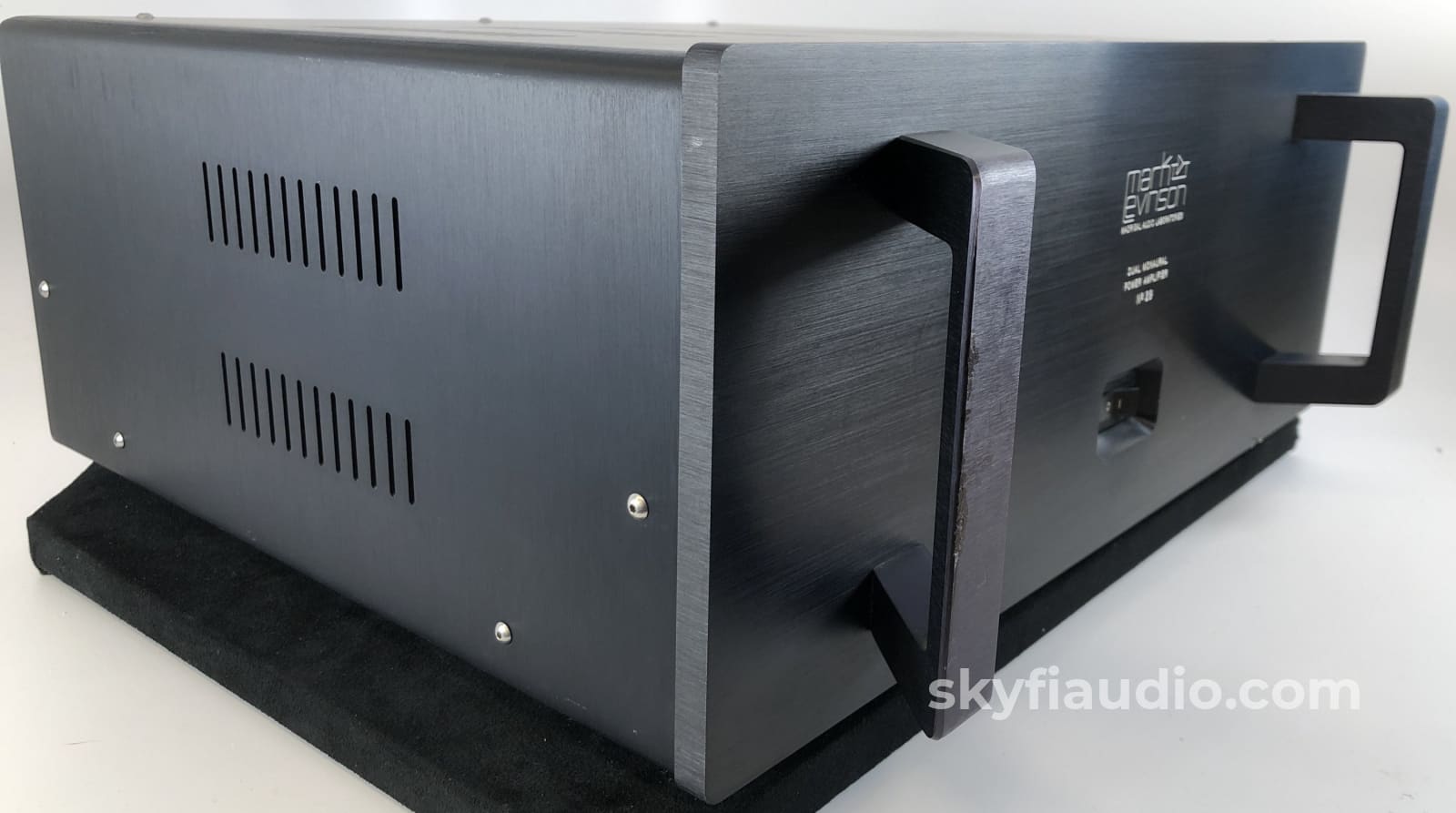
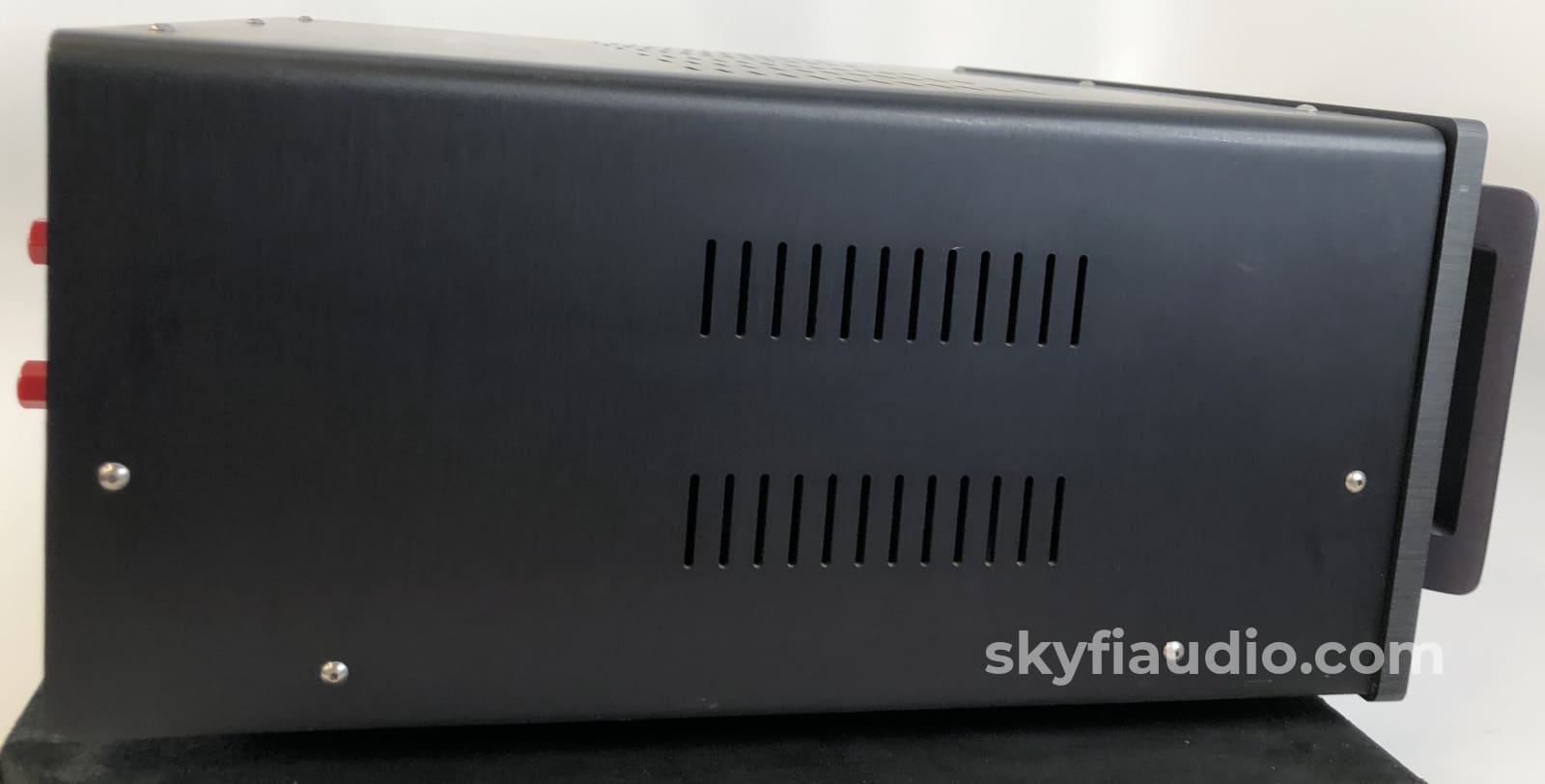
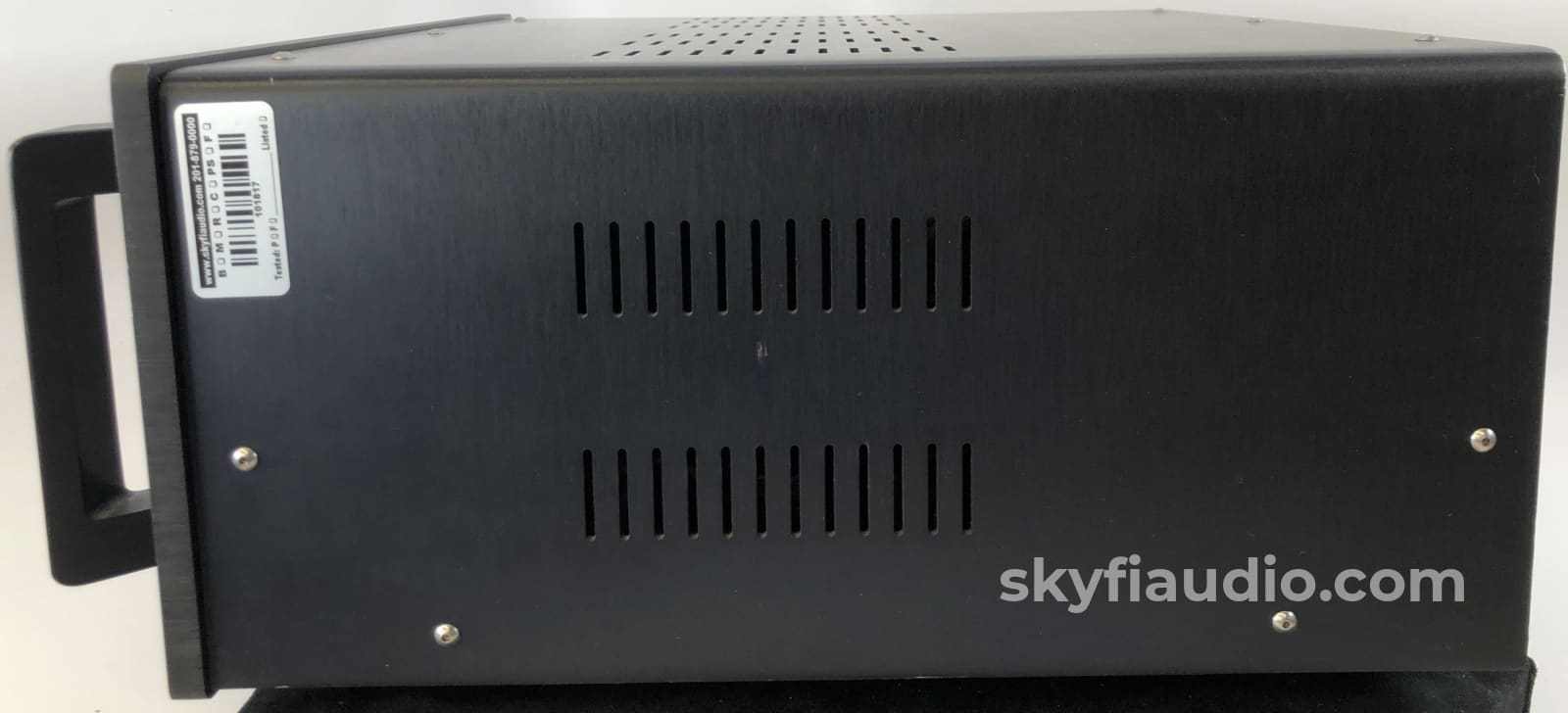
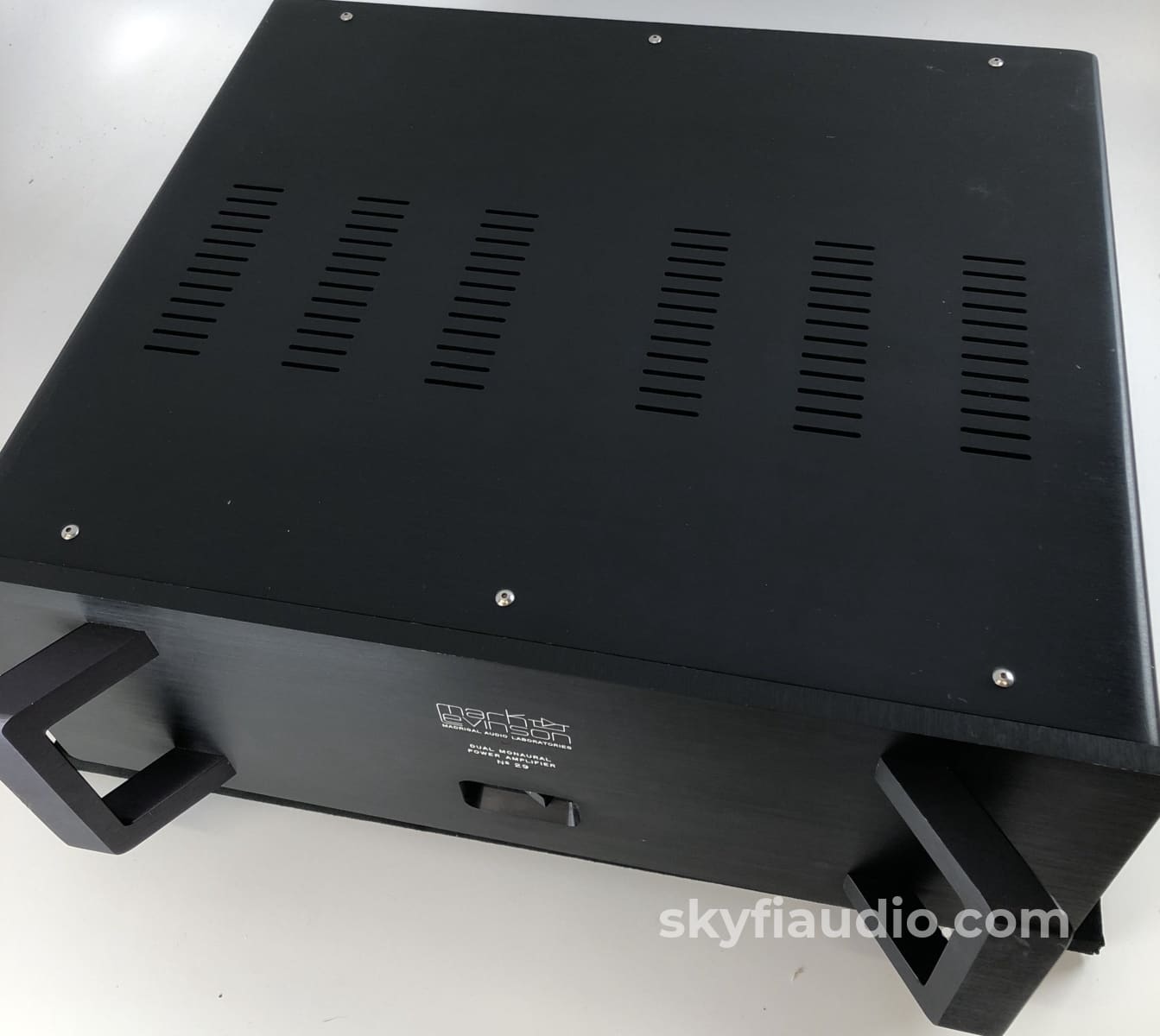
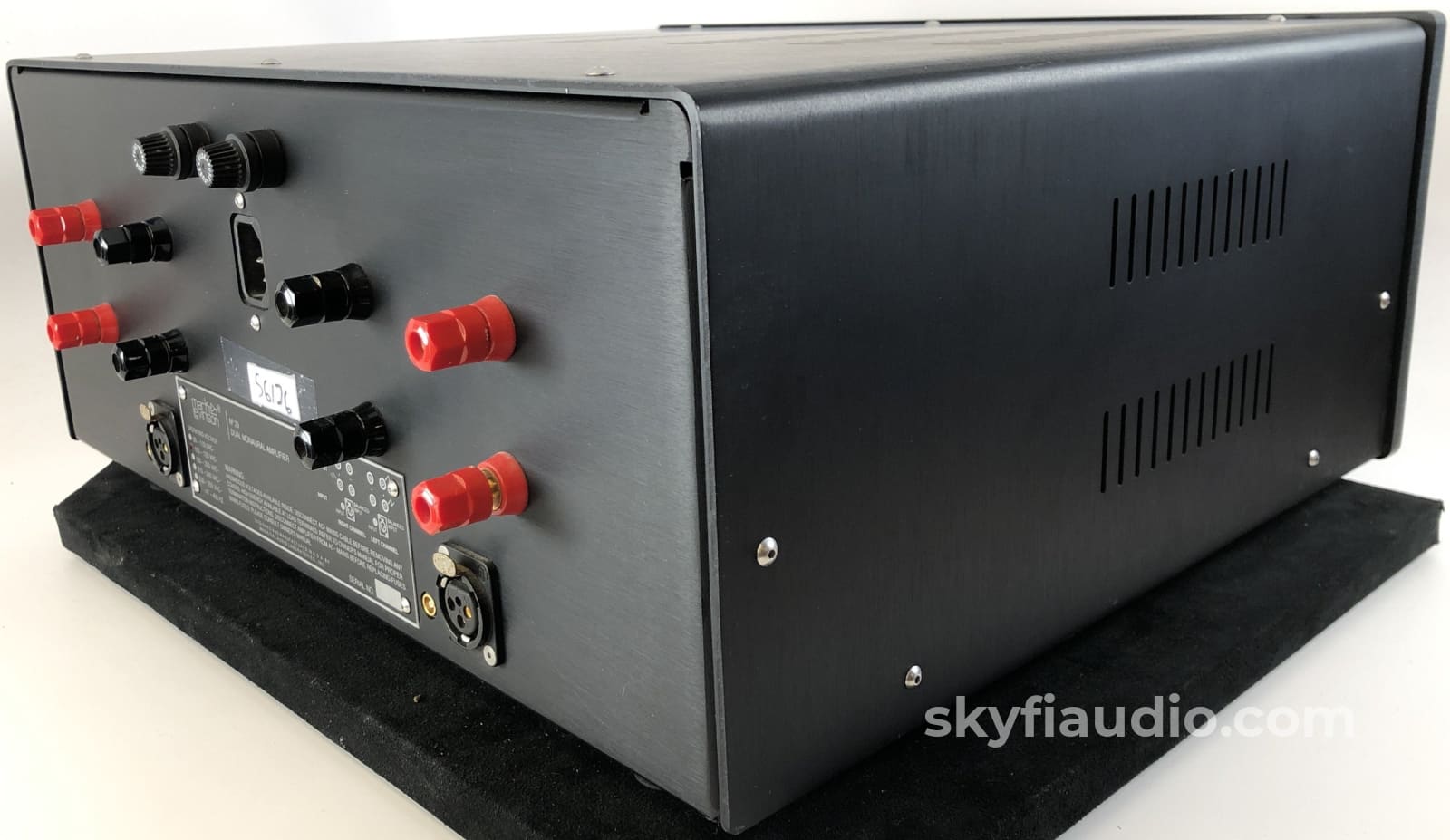



Mark Levinson No. 29 Dual Mono Amplifier, 50W of Glorious Class A
Free Shipping on Most Electronics - Excludes Speakers and Items Requiring Freight - Contiguous U.S. Only
Pickup currently unavailable at SkyFi 479

Mark Levinson No. 29 Dual Mono Amplifier, 50W of Glorious Class A
SkyFi 479
479 South Broad Street
Glen Rock NJ 07452
United States
Might be the best sounding early amp from Mark Levinson due to its low output Class A design that's still being used today in many amplifiers - despite the advances of Class D.
The chassis and covers are near perfect (see photos). The handles have a few scuffs but nothing terrible.
Tested and working perfectly!
Yes it's priced like the day it left the factory in 1991 - and well worth it for a collector or ardent audiophile.
Specifications
Rated power: 50W minimum continuous sine wave power into 8Ω, with both channels driven from 20Hz to 20KHz with no more than 0.1% THD (FTC). 100W minimum continuous sine wave power into 4Ω with both channels driven from 20Hz to 20KHz with no more than 0.2% THD (FTC).
Peak output voltage: 30 volts @ rated line voltage @ 8Ω
Frequency response: (-3dB) 4Hz, 122KHz
Input impedance: 50KΩ shunted by 1.5nF
Voltage gain: 26dB
Power consumption: Typically 100W @ idle, 200W @ rated power, 8Ω
Overall dimensions: See "Dimensions" in Owner's Manual
Shipping weight: 39.25 lbs. (17.8kg)
Connector complement:
Two RCA-type connectors
Two XLR-type connectors
Eight five-way binding posts
One IEC mains connector
Mark Levinson No.29 Dual Monaural Power Amplifier Owner's Manual
The SkyFi Testing Process for Amplifiers (Solid State):
We start with a visual inspection of all internal components to make sure there are no signs of stress or aging. Capacitors are checked for telltale sings of bulging or leaking, resistors are checked for signs of overheating or cracking, and transistors are checked for signs of stress or damage.
We then power up the unit carefully and run a simple 1k sine wave while monitoring the output on an oscilloscope for signs of distortion or noise. Finally, we run the amplifier to its full rated power into the appropriate resistive load provided by our Sencore amplifier tester. If there is an issue, it will usually be noticeable at this point. If everything reads clean, we will often test for THD (Total Harmonic Distortion) measured by our Keithley distortion meter, and compare it against the original manufacturers specifications. The amplifier then remains powered on to "burn in" on our test bench for a few hours to make sure there are no heat related issues. If there are balanced inputs available they will be also be tested.
Final testing involves pushing actual music thorough the amplifier. We've learned over time that some issues are only noticeable to a trained ear while listening to familiar source material. Our test bench has reference vintage KEF speakers that we're very familiar with which quickly reveal any discrepancies. Some amplifiers will then move into our listening room where they are tested with our in-house reference speakers of choice.
Please click here for detailed specifics regarding our specialized packing process that separates us from the rest.
|
Item |
Included |
|
Original Box |
No |
|
Manual |
Online |
|
Remote |
N/A |
|
Cables |
Yes - Power |
|
Physical Condition |
7 |
|
Working Condition |
10 |
Choose options
